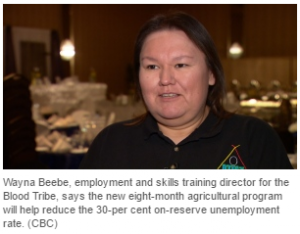I have found that my research gets specific, then general again and so on, in a cycle. Here is a mix of resources that reflect both the general and specific of my iterative research. I had a brief conversation with my vice-principal this week about this course and the research that I hope to continue through to the end of this year, hopefully next. In that meeting, I commented on how much I have learned this term, just enough to know how little I actually know! Here’s to the continued journey.
Grande, S. (2008). Red pedagogy: The un-methodology. In N. Denzin, Y. Lincoln, & L. T.
Smith (Eds.), Handbook of critical and Indigenous methodologies, (pp. 233 – 254).
Thousand Oaks, CA: SAGE Publications.
Though there are a few pages missing in this google book version, the noble vision of this chapter is evident. Grande (2008) calls attention to the reality that Indigenous scholars and theorists have been focused on social issues in their communities and critical pedagogies have been overlooked. His chapter almost reads as a challenge to indigenous educators, as if he is daring you to grab hold of red pedagogy and see what happens.
McMullen, B. and Rohrback, A. (2003). Distance education in remote Aboriginal communities: Barriers, learning styles and best practices. Prince George, BC: College of New Caledonia Press.
I was absolutely elated to find this. I have been very impressed with McMullen on a professional level and was thrilled to see that he co-authored a book a few years back. A book that has a poignantly relevant topic. It is one of the few resources that I printed off. I hope it will be good enough to snuggle up with next to the fire this weekend, but I only found it today so can’t speak to it yet.
Gooyers, B. (n.d.) Aboriginal Portal: Providing information and instruction to aboriginal distance students.
A simple guide for librarians in supporting Aboriginal distance students and a great reminder to instructional designers to not forget about their librarian or other student support services when designing a course.
C Pappas. (2014, November 26). The quintessential of the sociocultural learning theory. Retrieved from https://elearningindustry.com/sociocultural-learning-theory
An excellent reminder of the basics of Vygotsky’s theories. We so often apply his theory to early childhood education, forgetting that school aged children and adults are daily faced with learning new cultures and mindsets.
Indigenous and Northern Affairs Canada. (2015). Success stories.
I thought it appropriate to end on a positive note and provide a place where we can all go for inspiration.

